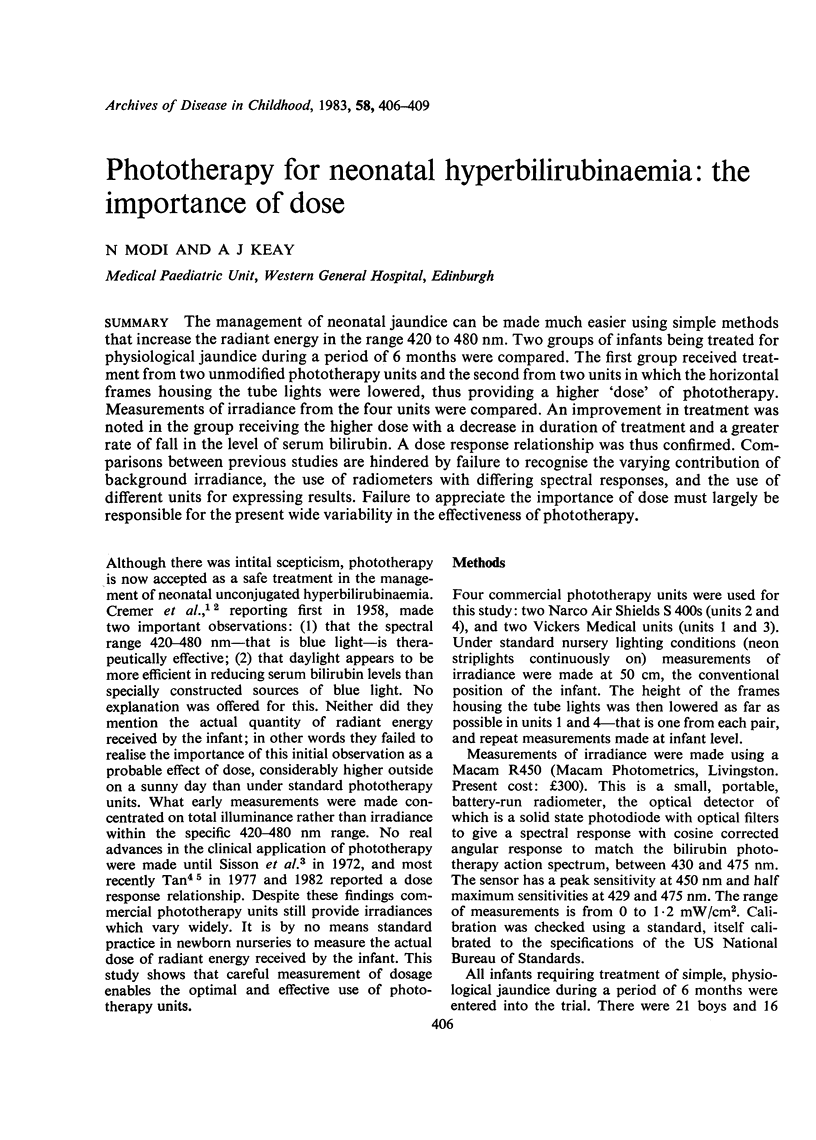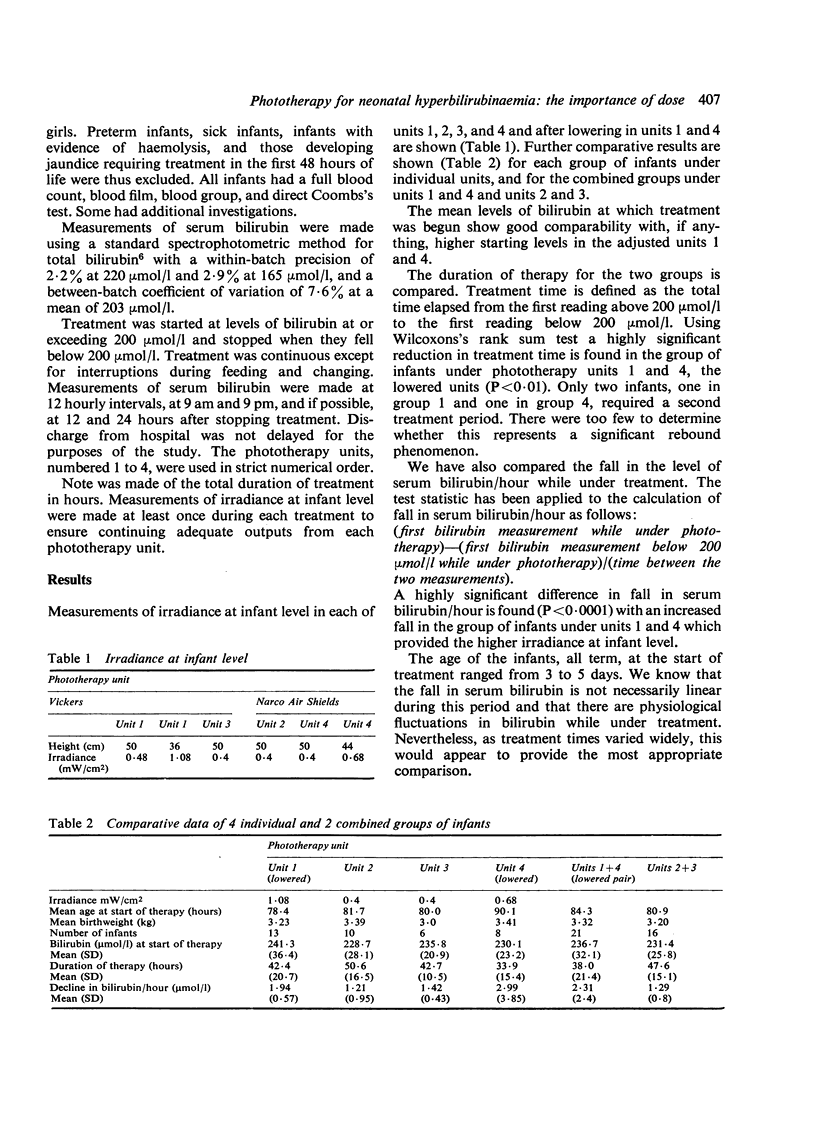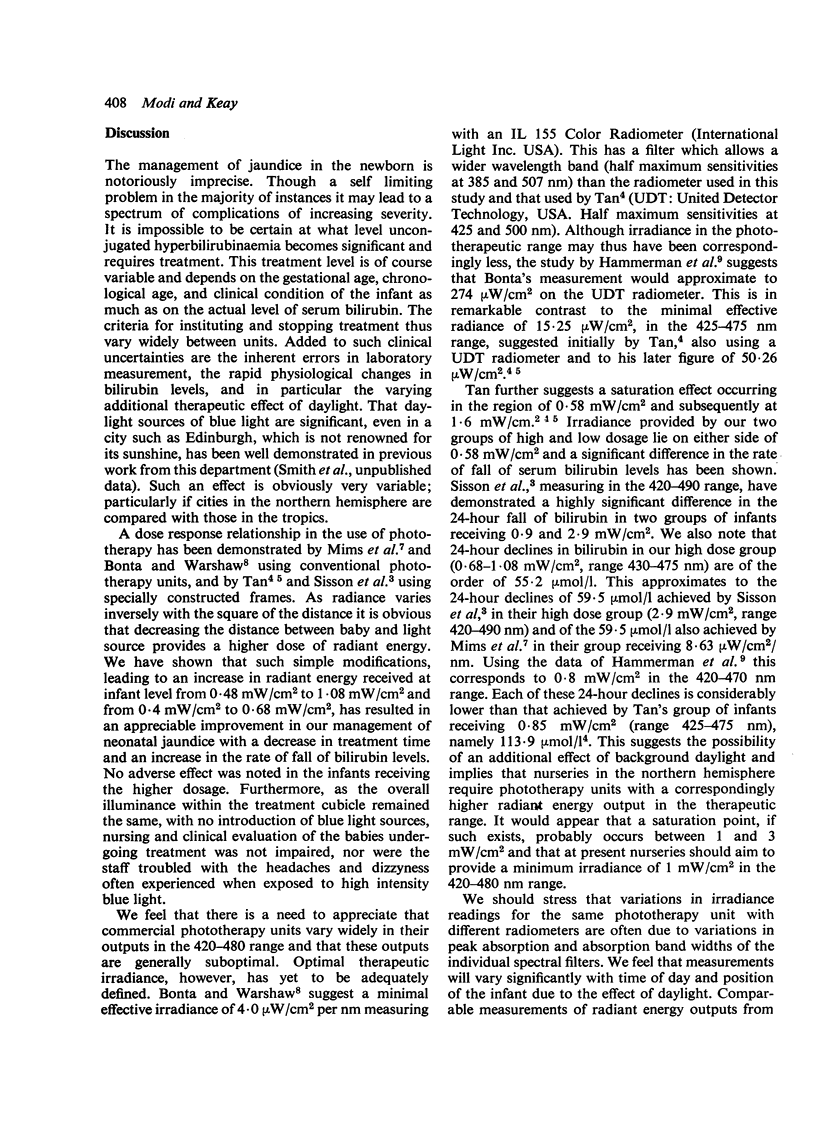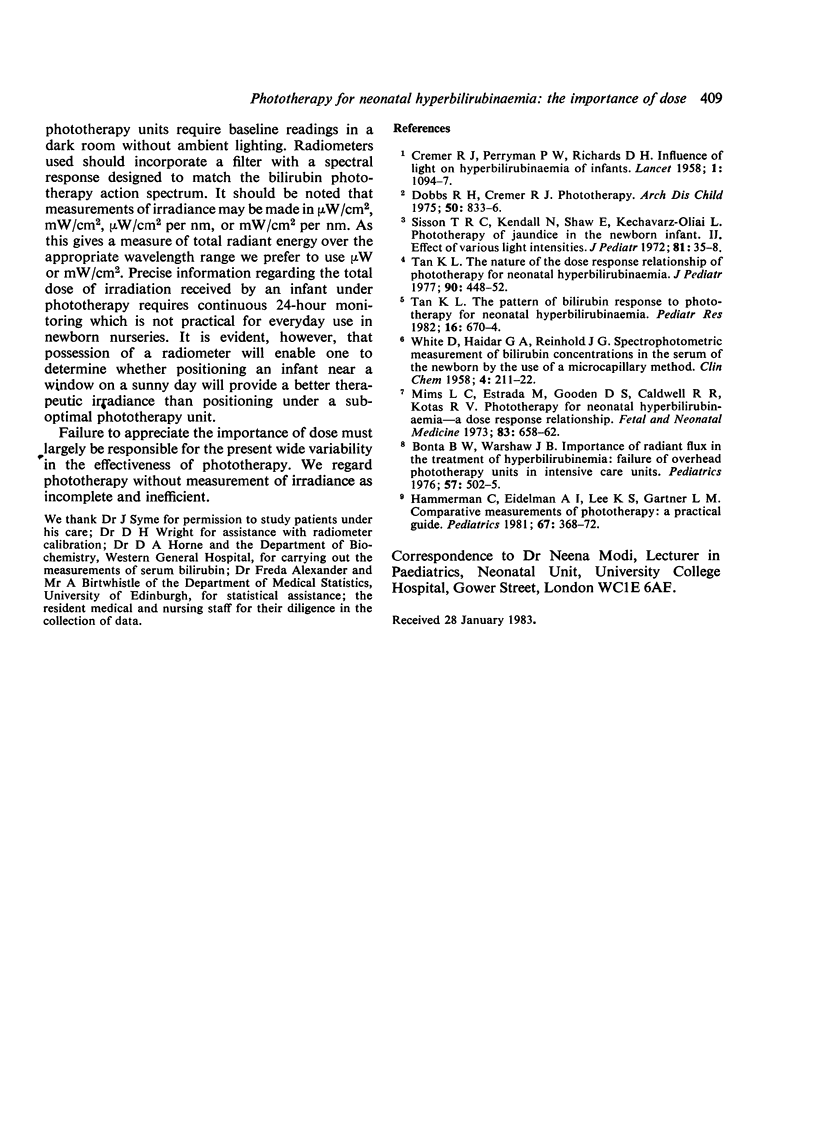Abstract
The management of neonatal jaundice can be made much easier using simple methods that increase the radiant energy in the range 420 to 480 nm. Two groups of infants being treated for physiological jaundice during a period of 6 months were compared. The first group received treatment from two unmodified phototherapy units and the second from two units in which the horizontal frames housing the tube lights were lowered, thus providing a higher 'dose' of phototherapy. Measurements of irradiance from the four units were compared. An improvement in treatment was noted in the group receiving the higher dose with a decrease in duration of treatment and a greater rate of fall in the level of serum bilirubin. A dose response relationship was thus confirmed. Comparisons between previous studies are hindered by failure to recognise the varying contribution of background irradiance, the use of radiometers with differing spectral responses, and the use of different units for expressing results. Failure to appreciate the importance of dose must largely be responsible for the present wide variability in the effectiveness of phototherapy.
Full text
PDF



Selected References
These references are in PubMed. This may not be the complete list of references from this article.
- Bonta B. W., Warshaw J. B. Importance of radiant flux in the treatment of hyperbilirubinemia: failure of overhead phototherapy units in intensive care units. Pediatrics. 1976 Apr;57(4):502–505. [PubMed] [Google Scholar]
- CREMER R. J., PERRYMAN P. W., RICHARDS D. H. Influence of light on the hyperbilirubinaemia of infants. Lancet. 1958 May 24;1(7030):1094–1097. doi: 10.1016/s0140-6736(58)91849-x. [DOI] [PubMed] [Google Scholar]
- Dobbs R. H., Cremer R. J. Phototherapy. Arch Dis Child. 1975 Nov;50(11):833–836. doi: 10.1136/adc.50.11.833. [DOI] [PMC free article] [PubMed] [Google Scholar]
- Hammerman C., Eidelman A. I., Lee K. S., Gartner L. M. Comparative measurements of phototherapy: a practical guide. Pediatrics. 1981 Mar;67(3):368–372. [PubMed] [Google Scholar]
- Sisson T. R., Kendall N., Shaw E., Kechavarz-Oliai L. Phototherapy of jaundice in the newborn infant. II. Effect of various light intensities. J Pediatr. 1972 Jul;81(1):35–38. doi: 10.1016/s0022-3476(72)80370-6. [DOI] [PubMed] [Google Scholar]
- Tan K. L. The nature of the dose-response relationship of phototherapy for neonatal hyperbilirubinemia. J Pediatr. 1977 Mar;90(3):448–452. doi: 10.1016/s0022-3476(77)80714-2. [DOI] [PubMed] [Google Scholar]
- Tan K. L. The pattern of bilirubin response to phototherapy for neonatal hyperbilirubinaemia. Pediatr Res. 1982 Aug;16(8):670–674. doi: 10.1203/00006450-198208000-00018. [DOI] [PubMed] [Google Scholar]
- WHITE D., HAIDAR G. A., REINHOLD J. G. Spectrophotometric measurement of bilirubin concentrations in the serum of the newborn by the use of a microcapillary method. Clin Chem. 1958 Jun;4(3):211–222. [PubMed] [Google Scholar]


